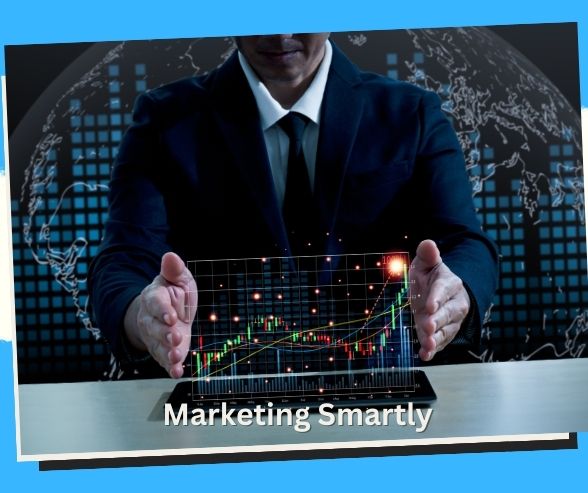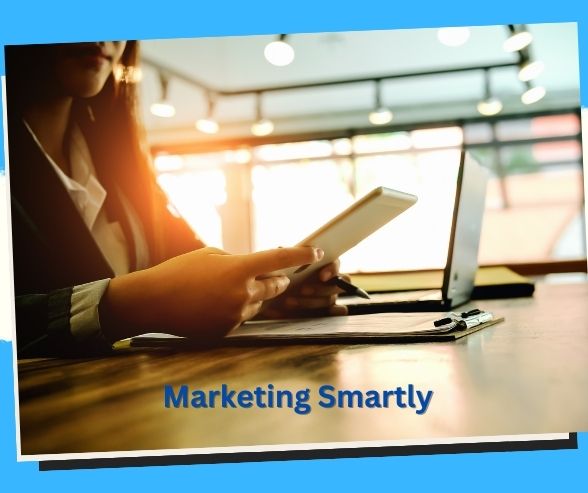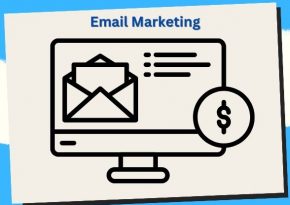
The Pros and Cons of Account-Based Marketing vs. Inbound Marketing
Uncover the key differences between Account-Based Marketing and Inbound Marketing for better ROI.
Account-Based Marketing (ABM) vs. Inbound Marketing 📈🤝
In today’s dynamic business environment, marketing strategies have evolved to meet the needs of a more discerning and tech-savvy audience. Two of the most prominent strategies that have gained traction are Account-Based Marketing (ABM) and Inbound Marketing. Both have unique approaches, goals, and methodologies, and understanding the differences between them can help businesses make more informed decisions about their marketing efforts. This article will delve into the basics of ABM and Inbound Marketing, compare their key features, and provide useful tips for leveraging both strategies effectively.
What is Account-Based Marketing (ABM)? 🎯
Definition and Overview
Account-Based Marketing (ABM) is a highly targeted business marketing strategy that focuses on specific accounts, rather than a broad market. ABM treats individual accounts as markets in their own right, allowing for personalized marketing efforts tailored to the unique needs and characteristics of each account.
Key Features of ABM
- Targeted Approach: ABM concentrates on a select number of high-value accounts.
- Personalization: Marketing messages and campaigns are customized for each account.
- Alignment with Sales: Close collaboration between marketing and sales teams is essential.
- Long Sales Cycles: Typically used in B2B contexts with longer sales cycles.
Benefits of ABM
- Higher ROI: Because resources are focused on high-value targets, the return on investment can be significantly higher.
- Improved Customer Relationships: Personalized interactions lead to stronger relationships with key accounts.
- Efficient Resource Utilization: Resources are directed where they can have the most impact, avoiding waste on low-potential leads.
What is Inbound Marketing? 🌐
Definition and Overview
Inbound Marketing is a strategy that focuses on attracting customers through valuable content and experiences tailored to them. Unlike traditional outbound marketing, which involves pushing messages to a broad audience, inbound marketing aims to pull in customers who are already interested in your products or services.
Key Features of Inbound Marketing
- Content Creation: Producing high-quality content that answers the needs and questions of your target audience.
- SEO and Organic Traffic: Utilizing search engine optimization to attract organic traffic.
- Lead Nurturing: Engaging with potential customers through email marketing, social media, and other channels.
- Analytics and Data: Leveraging data to continuously improve marketing efforts.
Benefits of Inbound Marketing
- Cost-Effective: Often more cost-effective than outbound strategies, as it focuses on organic growth.
- Builds Trust and Credibility: Providing valuable content helps establish your brand as a thought leader.
- Scalable: Easily scalable as your business grows and your audience expands.
Comparing ABM and Inbound Marketing ⚖️
Target Audience
- ABM: Focuses on a few high-value accounts, often in B2B contexts.
- Inbound Marketing: Targets a broader audience, aiming to attract individuals interested in your offerings.
Strategy and Approach
- ABM: Highly personalized and account-specific, requiring close alignment with sales.
- Inbound Marketing: Broad and content-driven, focusing on attracting leads through valuable content.
Sales Cycle
- ABM: Typically longer sales cycles, with a focus on building deep, personalized relationships.
- Inbound Marketing: Can cater to both short and long sales cycles, depending on the product or service.
Measurement of Success
- ABM: Success is measured by the depth of engagement and revenue generated from target accounts.
- Inbound Marketing: Success is measured by traffic, lead conversion rates, and overall engagement.
When to Use ABM vs. Inbound Marketing? 🤔
Best Scenarios for ABM
- High-Value B2B Sales: When selling high-value products or services to other businesses.
- Long Sales Cycles: When the sales cycle is long and requires nurturing.
- Limited Number of Potential Customers: When the potential customer base is limited and specific.
Best Scenarios for Inbound Marketing
- B2C Sales: When selling directly to consumers.
- High Volume of Leads: When you need to attract a large number of leads.
- Building Brand Awareness: When the goal is to establish brand presence and authority in the market.
Tips for Implementing ABM 🛠️
1. Identify Target Accounts
Select accounts that are most likely to generate significant revenue. Use criteria such as company size, industry, and potential for long-term partnership.
2. Personalize Your Outreach
Develop personalized content and campaigns tailored to the specific needs and pain points of each target account.
3. Align Sales and Marketing
Ensure close collaboration between sales and marketing teams to align goals, strategies, and metrics.
4. Utilize Data and Analytics
Use data to track the effectiveness of your campaigns and adjust strategies as needed. Measure engagement, conversion rates, and revenue from each account.
5. Nurture Relationships
Focus on building and nurturing relationships with key stakeholders in each account. Provide consistent value and maintain regular communication.
Tips for Implementing Inbound Marketing 📚
1. Create Valuable Content
Develop high-quality content that addresses the needs, challenges, and interests of your target audience. Use blogs, videos, ebooks, and more.
2. Optimize for SEO
Ensure your content is optimized for search engines to attract organic traffic. Use relevant keywords, meta descriptions, and backlinks.
3. Leverage Social Media
Utilize social media platforms to share content, engage with your audience, and drive traffic to your website.
4. Use Email Marketing
Engage with leads through targeted email campaigns. Provide valuable content, offers, and updates to nurture leads through the sales funnel.
5. Analyze and Improve
Regularly analyze the performance of your inbound marketing efforts. Use tools like Google Analytics to track traffic, engagement, and conversions, and adjust your strategy accordingly.
Integrating ABM and Inbound Marketing 🌀
While ABM and Inbound Marketing are often viewed as distinct approaches, they can be integrated to create a powerful, holistic marketing strategy. Here’s how:
1. Use Inbound to Attract, ABM to Close
Use inbound marketing to attract a broad audience and generate leads. Once high-value leads are identified, switch to ABM tactics to close the deal.
2. Content Personalization
Use insights gained from inbound marketing efforts to personalize content for ABM campaigns. For example, if a specific piece of content performs well with a target account, create similar, more personalized content for that account.
3. Data Sharing
Ensure seamless data sharing between inbound and ABM teams. Use CRM and marketing automation tools to keep track of leads and their interactions with your content.
4. Coordinated Campaigns
Run coordinated campaigns that leverage both inbound and ABM tactics. For example, use inbound marketing to build brand awareness and ABM to directly engage with key accounts.
5. Unified Metrics
Establish unified metrics and KPIs that encompass both inbound and ABM efforts. Measure overall impact on revenue, engagement, and customer satisfaction.
Benefits of ABM and Inbound Marketing 🌟
Benefits of ABM
- Personalization: ABM allows for highly personalized marketing campaigns tailored to the specific needs of individual accounts.
- Higher ROI: Targeted efforts lead to better resource allocation and higher return on investment.
- Alignment of Sales and Marketing: ABM fosters collaboration between sales and marketing teams, ensuring unified goals.
- Enhanced Customer Retention: Personalized attention increases customer satisfaction and retention rates.
- Improved Tracking and Measurement: ABM’s focused approach allows for more precise tracking of campaign performance.
- Shorter Sales Cycles: By targeting high-value accounts, the sales cycle is often shorter and more efficient.
- Stronger Relationships: Direct and personalized engagement builds stronger relationships with key clients.
- Scalable with Technology: Advanced tools and platforms can automate and scale ABM efforts effectively.
- Better Resource Utilization: Resources are concentrated on the most promising accounts, maximizing impact.
- Competitive Advantage: A personalized approach helps businesses stand out in a crowded market.
Benefits of Inbound Marketing
- Attracts Qualified Leads: Inbound Marketing draws in customers who are genuinely interested in the product or service.
- Cost-Effective: It often costs less than traditional outbound marketing methods.
- Builds Brand Authority: High-quality content positions the brand as an industry leader.
- Long-Term Results: Content created for inbound marketing continues to attract leads over time.
- Enhanced Customer Trust: Providing valuable information builds trust with potential customers.
- Improves SEO: Regular content updates and SEO practices improve search engine rankings.
- Supports the Buyer’s Journey: Inbound marketing addresses different stages of the buyer’s journey, from awareness to decision.
- Scalable: As the business grows, so can inbound marketing efforts.
- Fosters Engagement: Encourages ongoing engagement through blogs, social media, and other channels.
- Detailed Analytics: Provides insights into customer behavior and campaign performance.
Case Studies: Real-World Examples 📚
ABM Success Stories
- Cisco: Leveraged ABM to target key enterprise accounts, resulting in a 40% increase in sales pipeline.
- Snowflake: Utilized ABM to focus on high-value accounts, leading to a 300% increase in pipeline.
- Thomson Reuters: Implemented ABM to enhance customer retention and saw a 95% renewal rate.
- GumGum: Adopted ABM to penetrate the automotive industry, achieving a 3x increase in engagement.
- Engagio: Targeted specific accounts, resulting in a 5x higher engagement rate compared to traditional methods.
- InsideView: Focused on ABM to increase cross-sell opportunities, leading to a 50% increase in revenue.
- Demandbase: Used ABM to improve conversion rates by 20%.
- Lenovo: Deployed ABM strategies to focus on enterprise accounts, resulting in a significant increase in deal size.
- EverString: Implemented ABM to enhance lead quality and saw a 200% increase in engagement.
- Terminus: Leveraged ABM to target key accounts, achieving a 75% increase in pipeline contribution.
Inbound Marketing Success Stories
- HubSpot: Grew its customer base from 1,000 to 30,000 using inbound marketing strategies.
- Moz: Increased organic traffic by 45% through high-quality content and SEO practices.
- Buffer: Utilized inbound marketing to grow from a small startup to a well-known brand with millions of users.
- Patagonia: Used compelling storytelling and content marketing to increase brand loyalty and sales.
- Zendesk: Attracted and converted leads through informative content, resulting in significant revenue growth.
- Airbnb: Leveraged user-generated content to build trust and expand its customer base.
- Intercom: Grew its customer base by creating valuable content that addressed pain points and solutions.
- Salesforce: Used inbound marketing to generate leads and nurture relationships, resulting in increased sales.
- Neil Patel: Built a successful personal brand and business through consistent and valuable content.
- General Electric (GE): Used content marketing to humanize the brand and connect with a broader audience.
Key Takeaways 📝
- ABM Personalization: Tailoring campaigns to individual accounts yields higher engagement and conversion rates.
- Inbound Attraction: Creating valuable content attracts high-quality leads naturally.
- Sales-Marketing Alignment: Both strategies benefit from close collaboration between sales and marketing teams.
- Resource Allocation: ABM focuses resources on high-value accounts, while Inbound Marketing spreads resources across a wider audience.
- Customer Journey: Inbound Marketing addresses all stages of the buyer’s journey, while ABM focuses on specific account needs.
- Technology Utilization: Both strategies can be scaled and optimized using advanced marketing technologies.
- ROI: ABM typically offers a higher ROI due to its targeted nature.
- Customer Relationships: ABM fosters deeper relationships with fewer accounts; Inbound builds broader engagement.
- Content Creation: High-quality content is crucial for Inbound Marketing success.
- Market Differentiation: Personalized ABM approaches help stand out in competitive markets.
Frequently Asked Questions (FAQs) ❓
1. What is the main difference between ABM and Inbound Marketing?
Answer: ABM targets specific high-value accounts with personalized campaigns, while Inbound Marketing attracts a broader audience through valuable content.
2. Can ABM and Inbound Marketing be used together?
Answer: Yes, combining both strategies can create a comprehensive approach that leverages the strengths of each method.
3. Which industries benefit most from ABM?
Answer: B2B industries, especially those with high-value, complex sales cycles, benefit the most from ABM.
4. How does Inbound Marketing support SEO?
Answer: Inbound Marketing involves creating high-quality content that improves search engine rankings and attracts organic traffic.
5. What tools are essential for implementing ABM?
Answer: Tools like HubSpot, Demandbase, and Terminus are essential for account targeting, campaign management, and performance tracking.
6. How do you measure the success of Inbound Marketing?
Answer: Success is measured through metrics such as website traffic, lead generation, conversion rates, and customer engagement.
7. What are the challenges of ABM?
Answer: ABM can be resource-intensive, requires close sales-marketing alignment, and needs advanced tools for effective implementation.
8. How does Inbound Marketing generate leads?
Answer: By creating and distributing valuable content, Inbound Marketing attracts potential customers who are interested in the brand’s offerings.
9. Is ABM suitable for small businesses?
Answer: While typically used by larger enterprises, small businesses can also implement ABM on a smaller scale with the right tools and strategies.
10. What content works best for Inbound Marketing?
Answer: Blogs, whitepapers, case studies, infographics, and videos are effective content types for Inbound Marketing.
Conclusion 🏁
Understanding the differences and synergies between Account-Based Marketing (ABM) and Inbound Marketing is crucial for developing an effective marketing strategy. ABM’s personalized approach is ideal for targeting high-value accounts with long sales cycles, while Inbound Marketing’s content-driven strategy is perfect for attracting and nurturing a broader audience. By leveraging the strengths of both strategies, businesses can create a more comprehensive and effective marketing approach that drives growth and fosters strong customer relationships.
Remember, the key to success lies in knowing your audience, personalizing your approach, and continuously analyzing and refining your strategies. Whether you choose to focus on ABM, Inbound Marketing, or a combination of both, staying adaptable and responsive to your audience’s needs will always be your best strategy. Happy marketing! 🚀
Key Phrases
- Account-Based Marketing advantages
- Inbound Marketing benefits
- ABM vs. Inbound Marketing comparison
- Differences between ABM and Inbound Marketing
- ABM strategy vs. Inbound Marketing approach
- Choosing ABM or Inbound Marketing
- ABM and Inbound Marketing for B2B
- Inbound Marketing vs. Account-Based Marketing
- Pros and cons of ABM and Inbound Marketing
- Effective marketing strategies: ABM vs. Inbound
Best Hashtags
- #AccountBasedMarketing
- #InboundMarketing
- #MarketingStrategies
- #ABMvsInbound
- #B2BMarketing
- #MarketingTrends
- #DigitalMarketing
- #LeadGeneration
- #ContentMarketing
- #MarketingComparison
Save/Share this post with QR CODE
Disclaimer
This article is for informational purposes only and does not constitute endorsement of any specific technologies or methodologies and financial advice or endorsement of any specific products or services.
📩 Need to get in touch?
Feel free to Email Marketing Smartly for comments, suggestions, reviews, or anything else.
We appreciate your reading. 😊Simple Ways To Say Thanks & Support Us:
1.) ❤️GIVE A TIP. Send a small donation thru Paypal😊❤️
Your DONATION will be used to fund and maintain MKTGS.com
Subscribers in the Philippines can make donations to mobile number 0917 906 3081, thru GCash.
3.) 🛒 BUY or SIGN UP to our AFFILIATE PARTNERS.
4.) 👍 Give this news article a THUMBS UP, and Leave a Comment (at Least Five Words).
AFFILIATE PARTNERS

World Class Nutritional Supplements - Buy Highest Quality Products, Purest Most Healthy Ingredients, Direct to your Door! Up to 90% OFF.
Join LiveGood Today - A company created to satisfy the world's most demanding leaders and entrepreneurs, with the best compensation plan today.








Comments (0)